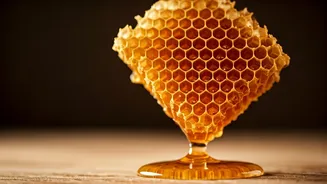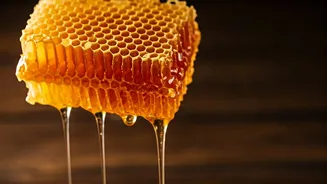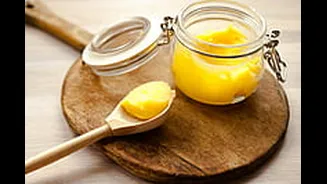Water Test Verification
The water test serves as a fundamental method to differentiate between pure and adulterated honey. A simple process involves adding a teaspoon of honey to a glass
of water. If the honey remains cohesive and sinks to the bottom without dissolving immediately, it is likely pure. Conversely, if the honey quickly dissolves or mixes with the water, it often indicates the presence of additives, suggesting that the honey might not be entirely pure. This straightforward test offers an accessible first step for consumers to assess the quality of their honey, providing a preliminary indication of its authenticity and purity. Using this test, you can effectively assess the quality of your honey at home without any specialized equipment.
Thumb Test Revelation
The thumb test presents a practical method to evaluate the purity of honey. By placing a small amount of honey on your thumb, the reaction provides a quick assessment. Pure honey will maintain its form, remaining viscous and not easily spreading. If the honey runs or spreads across your skin, it is a sign that the honey may be mixed with other substances such as sugar syrup. The thumb test, therefore, provides an immediate, user-friendly tool to quickly assess the consistency and authenticity of the honey. This easy technique allows individuals to check the honey's characteristics conveniently and rapidly.
Paper Test Inspection
The paper test offers another useful method to test honey's purity. Applying a drop of honey onto a piece of absorbent paper can reveal valuable insights. Pure honey should maintain its form and not soak into the paper. If the honey drop permeates and wets the paper, it suggests that the honey may contain added water or other adulterants. This test utilizes readily available materials to quickly verify honey's consistency and quality. The paper test acts as a simple method to get insights into whether the honey has been diluted or mixed with other ingredients, providing a quick check for consumers seeking authentic honey products.
Heat Test Examination
Evaluating honey through heat can also distinguish its purity. When pure honey is heated, it should caramelize slowly. Adulterated honey, on the other hand, might not caramelize in the same way; it could bubble or foam excessively. Although not a definitive test, the heating approach provides another way to observe how the honey reacts under controlled conditions. This method offers another layer of assessment, allowing consumers to identify potential impurities and enhance the ability to distinguish authentic honey from imitations. This method is suitable for a more involved examination that contributes to the overall verification process.
Crystalization Analysis Insight
Observing honey crystallization offers insights into its composition and purity. The crystallization process, which can occur over time, is a natural phenomenon. Pure honey tends to crystallize in a uniform manner, forming small, even crystals. Adulterated honey, on the other hand, may crystallize unevenly, displaying larger, coarser crystals. This difference arises because of the varied ingredients used in adulterated products. This method gives a visual assessment of the honey's structure, allowing consumers to gauge its authenticity. This inspection helps in determining whether the honey is free from additives that can alter its natural crystallization process, thus ensuring its genuineness.
Smell and Taste Appraisal
A sensory examination of honey can also aid in confirming its genuineness. Pure honey has a distinctive aroma which varies depending on its floral source. Its taste should be naturally sweet, and the flavour profile should be consistent with the flower source. If the honey has an unnatural or overly sweet taste, it could indicate the presence of added sugars or flavourings. Also, the absence of a distinct aroma or the presence of a strange smell could signify adulteration. Therefore, the sensory evaluation is an important step to assess the quality of the honey. Tasting and smelling the honey offers an important method to quickly check its authenticity, enhancing the overall assessment of the honey's quality and purity.










